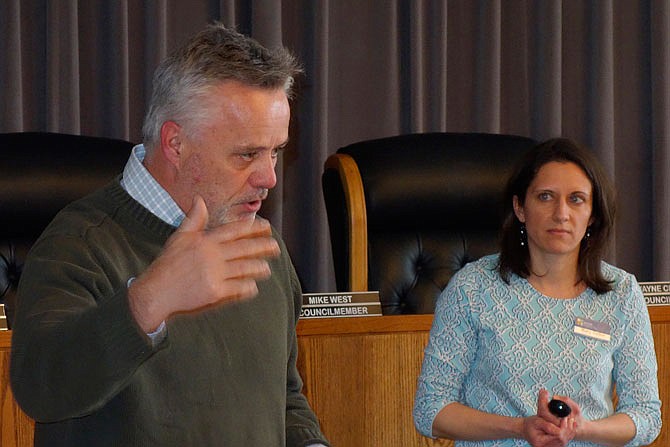Representatives of Our Missouri Waters are considering organizing a group of people interested in the Lower Missouri-Moreau River Watershed.
Officials of three agencies conducted a planning meeting Thursday at Fulton City Hall.
"We want to hear about what are the most important issues in your watershed," said Jennifer Hoggatt, coordinator for Our Missouri Waters, Missouri Department of Natural Resources.
The leaders also included Ed Siegmund of the Mid-Missouri Regional Planning Commission, Mary Culler of the Missouri Department of Natural Resources, and Dan Downing, who works within the water quality program for University of Missouri Extension. Attendees came from the city of Fulton and Fulton Stream Team, Callaway County Health Department, HDR Engineering, Missouri Farm Bureau and private individuals.
Siegmund said Thursday's meeting was to "start a conversation."
"We have to start somewhere," he said.
All of Callaway County and a large portion of Cole County are in this watershed, comprised of 3,400 square miles, or 2.176 million acres. Including another 12 counties, the Lower Missouri-Moreau contains tributaries to the Missouri River and that waterway from Glasgow to Morrison, except for the Osage River. The watershed is 37 percent forest, 36 percent grassland, 17 percent cropland, 7 percent growing urban and 1 percent water.
The watershed is one of 66 watersheds in Missouri with the "HUC-8" size designation, between 200,000 and 2 million acres, Culler said.
"The majorities of these counties are expected to increase in population by 2030," Culler said, adding increased populations stress watersheds. "We're trying to form a local watershed advisory committee and compile ideas into a Healthy Watershed Strategy."
After that strategy is compiled, the next step is to develop water quality projects.
The "Our Missouri Waters" project has goals including raising awareness, receiving input, coordinating efforts and building partnerships. The long-term goal is to maintain and improve water quality.
"We're going to be sending out press releases and information about the watershed, and looking to form a group of people interested in conversations about watershed and developing some project," Siegmund added.
He can be reached at 573-657-9779. Culler may be reached at 660-385-8000.

